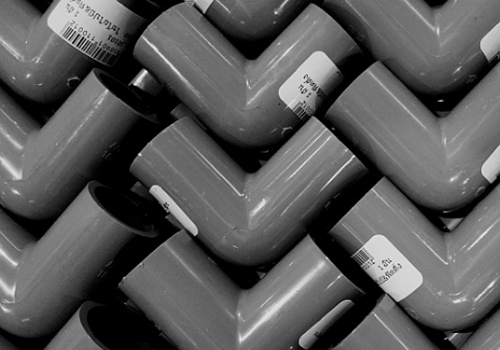Mold Making refers to the process of molding and blanking tools as well as the making of shear and dies – cutting molds. The general mold has the upper mold and the lower mold two parts. The steel plate is placed between the upper and lower molds and the material is formed under the action of the press to obtain the workpiece determined by the mold shape or to remove the corresponding waste. Injection molds can be used for everything from electronic connectors to car dashboards. Do you know how to classify injection molds?
- Single parting surface injection mold
The moving die and the fixed die are separated, known as single parting surface mold or double plate mold. It is the simplest and most basic form of an injection mold. It can be designed into a single-cavity injection mold and multi-cavity injection mold according to requirements and is the most widely used type of injection mold.
- Double parting surface injection mold
Double parting surface injection mold with two parting surfaces, compared with single parting face, double parting surface injection mold in the mold parts can increase a piece of local mobile in the middle of the plate (also called activity gate plate with a gate, flow and the fixed mold need other parts and components), so also called three plates (dynamic template, the middle plate, template) injection mold, it is often used for point gate feeding single cavity or multi-cavity injection mold, mold, intermediate plate on the fixed mold guide pillar and template for distance separation, in order to remove the gating system between the two template set. Double parting surface injection mold has a complex structure, high manufacturing cost, and difficult parts processing. It is generally not used for the molding of large or extra-large plastic products.
- Injection mold with side parting and core-pulling mechanism
When the plastic part has a side hole or a side concave, the core or slider that can be moved laterally shall be used for forming. After injection molding, the moving die first moves down for a certain distance, and then the inclined plane segment of the bent pin fixed on the fixed template forces the slider to move outwards. At the same time, the push rod of the demoulding mechanism pushes the pushing plate to make the plastic part take off from the core.
- Injection mold with movable forming parts
Due to some special structure of plastic parts, the injection mold can be set with movable molding parts, such as movable punch, movable concave die, movable insert, movable thread core or ring, etc., which can be moved out of the mold together with the plastic part, and then separated from the plastic part.
- Automatic thread unloading injection mold
When a plastic part with thread is automatically demoulded, a thread core or ring that can be rotated can be set on the mold to drive the screw core or thread ring to rotate and produce a plastic part by using the rotary mechanism of the mold opening action or the injection molding machine or a special driving device.
- Flow-free injection mold
Flow-free injection molding refers to the use of adiabatic heating of the flow path so that the plastic from the nozzle of the injection molding machine between the cavity to maintain the melting state, the mold out of the plastic parts without casting system coagulation. The former is called adiabatic runner injection mold, the latter is called hot runner injection mold.
- Rectangular injection mold
The right-angle injection mold is only suitable for the Angle type injection molding machine. Different from other injection molding models, this kind of mold is perpendicular to the direction of feeding and the direction of opening and closing the mold. Its main flow way is opened in both sides of the moving, fixed die parting surface, while the cross-sectional area is unchanged, which is different from other injection molding machines with the mold, in order to prevent the injection molding machine nozzle and the main flow inlet end wear and deformation, the end of the main flow can be set up to replace the flow insert.
- The ejection mechanism injection mold on a fixed mold
Most of the ejection devices are installed on the side of the moving die, which is conducive to the ejection device in the open and close mold system of the injection molding machine. In actual production, some plastic parts are limited by the shape. It is better to leave the plastic parts on the mold side for molding, which makes the plastic parts come out of the mold.

